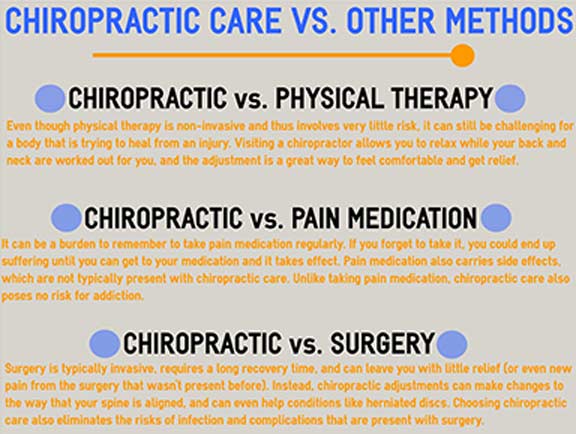The Relationship Between Posture And Pain In The Back: Techniques For Maintaining Correct Placement Throughout The Day
The Relationship Between Posture And Pain In The Back: Techniques For Maintaining Correct Placement Throughout The Day
Blog Article
Content Writer-Houghton Fraser
Keeping proper stance isn't just about staying up directly; it has to do with straightening your body in a way that supports your spine and decreases the risk of pain in the back. The method you sit, stand, and move throughout the day can significantly influence your spinal health. Yet how specifically can you make certain excellent positioning continually, also throughout busy days loaded with numerous tasks? Allow's dive deeper right into the refined yet impactful adjustments you can make to your day-to-day routine to keep your back delighted and healthy and balanced.
Relevance of Appropriate Posture
Proper position is critical in keeping a healthy back and preventing discomfort. When you rest or stand with good pose, your spinal column is in placement, minimizing stress on your muscle mass, tendons, and joints. This positioning allows the body to disperse weight evenly, preventing extreme stress and anxiety on certain areas that can cause discomfort and pain. By keeping your back appropriately straightened, you can also enhance your breathing and digestion, as slouching can press body organs and limit their performance.
Furthermore, keeping nyc chiropractor for herniated disc can enhance your general appearance and self-esteem. When you stand tall with your shoulders back and head held high, you exude self-confidence and appear more friendly. Excellent posture can additionally make you really feel a lot more energized and alert, as it advertises proper blood flow and enables your muscular tissues to work successfully.
Integrating correct pose right into your day-to-day regimen, whether resting at a workdesk, strolling, or exercising, is vital for avoiding back pain and advertising general well-being. Remember, a little change in just how you hold on your own can make a considerable difference in how you really feel and function throughout the day.
Common Postural Mistakes
When it pertains to maintaining great posture, numerous people unwittingly make typical mistakes that can contribute to back pain and pain. Among one of the most widespread mistakes is slumping over or hunching over while sitting or standing. This position puts too much pressure on the spinal column and can cause muscle mass discrepancies and discomfort in the long run.
Another common error is overarching the reduced back, which can squash the all-natural curve of the back and trigger pain. In Read More Here , crossing legs while resting may feel comfortable, however it can develop an imbalance in the hips and pelvis, leading to postural issues.
Utilizing a cushion that's as well soft or too strong while resting can also impact your alignment and contribute to pain in the back. Last but not least, continuously craning your neck to check out screens or adjusting your placement often can stress the neck and shoulders. Being mindful of these typical postural errors can aid you keep better alignment and decrease the risk of neck and back pain.
Tips for Correcting Alignment
To enhance your positioning and reduce pain in the back, it's important to focus on making small adjustments throughout your day-to-day regimen. Begin by bearing in mind your position. When resting, guarantee your feet are flat on the floor, your back is straight, and your shoulders are unwinded. Prevent slouching or leaning to one side. Use ergonomic chairs or cushions to support your reduced back.
When standing, disperse your weight evenly on both feet, maintain your knees slightly bent, and embed your hips. Engage your core muscles to sustain your spinal column. Take breaks to extend and walk if you have a sedentary job. Include workouts that strengthen your core and back muscular tissues, such as planks or bridges.
While resting, utilize https://www.bmj.com/content/372/bmj.m4825 that supports the natural curve of your neck to preserve correct spine alignment. Avoid sleeping on your belly, as it can strain your neck and back. By bearing in chinese medicine nyc and making small changes, you can progressively correct your placement and reduce pain in the back.
Final thought
Remember, preserving good posture is crucial to stop back pain and advertising spinal health. By being mindful of your positioning, dispersing weight equally, and engaging your core muscular tissues, you can lower stress on your back and reduce the danger of discomfort and injury. Include ergonomic support, take routine breaks to stretch, and reinforce your core and back muscles to preserve appropriate alignment throughout the day. Your back will thank you for it!
